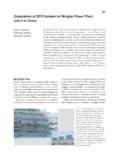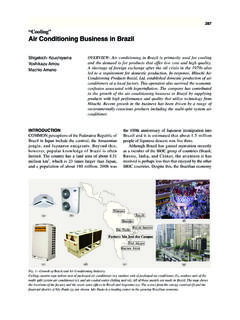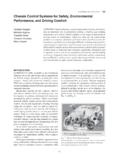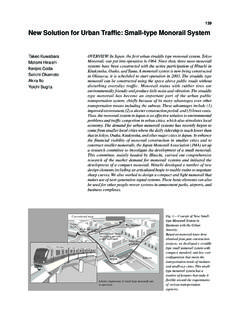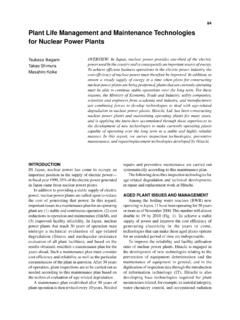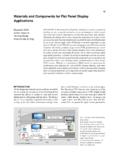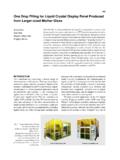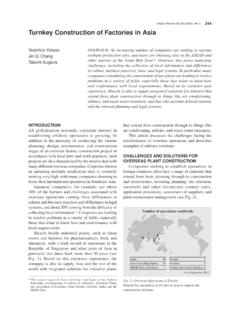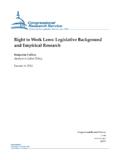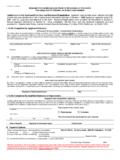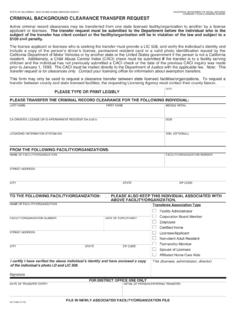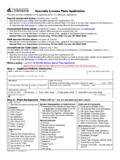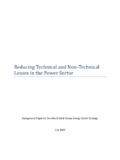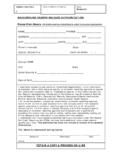Transcription of Hitachi's Gas Turbine Product Range and …
1 Hitachi Review Vol. 62 (2013), No. 1 15. Hitachi's Gas Turbine Product Range and development background Jinichiro Gotoh, Dr. Eng. OVERVIEW: Since supplying its first gas Turbine in 1966, total orders Shunichi Kuba, Dr. Eng. received by Hitachi to date have reached 600 units. The 1960s and 1970s Mitsuo Teranishi were the formative years for Hitachi's gas Turbine business during which it expanded sales outside Japan, primarily through technical collaborations Kenji Kamino with General Electric Company, and built up the foundations of its current Fumiyuki Hirose business. The 1980s and 1990s saw a boom in combined cycle plants that provided Hitachi with the opportunity to expand its domestic business, including being the first Japanese vendor to supply combined cycle systems with exhaust heat recovery.
2 In 1988, Hitachi developed its H-25 gas Turbine , the first model to use its own technology throughout for everything from design to manufacturing. Hitachi has also been marketing the H-25. internationally since 2000, and this has led to the development of its current global business. Hitachi's gas Turbine business can also be thought of as embodying the Pioneering Spirit that was part of what inspired the company's original formation. INTRODUCTION HISTORY. ALTHOUGH its business has faced a number of Origins of Gas Turbine Manufacturing at Hitachi difficulties over the years, including economic Hitachi's involvement with gas turbines dates recessions and appreciation of the yen, total orders for back to 1938 and a turbocharger for a 500-HP.
3 Hitachi's gas turbines since its technical collaboration (1 HP = kW) exhaust Turbine built as part of with General Electric Company (GE) have now experimental research commissioned by the Japanese reached 600, and they can be thought of as having Naval Aeronautical Technology Institution. The size solidified their role as a mainstay of thermal power of the exhaust Turbine was progressively increased generation. Those gas turbines have earned a strong and a total of 800 units had been produced by the end reputation for reliability, with some of the early of the Second World War in August 1945. Work also Hitachi-GE units having been in operation for more proceeded on the testing and research of jet engines, than 30 years.
4 Hitachi built up the foundations of with Hitachi's role including collaboration on the its current thermal power generation business in the manufacture of the Ne-20 and the prototyping of subsequent period when combined cycle technology the Ne-230. A prototype 1,100-kW open, two-shaft, was becoming established in Japan, during which regenerative gas Turbine for power generation was it led the market with its experience and with the completed in 1954. Although this prototype had been environmental technologies needed to satisfy stringent used to make a variety of research enhancements by Japanese regulations. It was during this time that 1959, it did not lead to commercial production as the Hitachi developed the H-25 gas Turbine using its own market for gas turbines at that time had yet to develop.
5 Technology. The high performance and reliability of the H-25 have earned it a total of 151 installations. Technical Partnership with GE. Hitachi then went on to develop the H-15 sister (1) Manufacture of first gas Turbine Product and the medium-capacity (100-MW class) In 1964, Hitachi signed a joint manufacturing H-80 gas Turbine . agreement with GE, the world's leading gas Turbine This article looks back at the more than 40 years manufacturer. This led to the first Hitachi-GE gas of Hitachi's gas Turbine business, and also describes Turbine being delivered to Nippon Petro Chemicals developments over recent years. Co., Ltd. (as it was then known) in 1966. This MS3002. Hitachi's Gas Turbine Product Range and development background 16.
6 Model Output No. MS1002 5,050 HP 2. 20,000 700. No. of gas turbines that have commenced operation MS3002 15,140 HP 28. 18,000. 600 H-15 16,900 kW 6. Cumulative output (MW). 16,000. Cumulative output H-25 32,000 kW 151. 14,000 500. MS5001 26,300 kW 286. 12,000 400 MS5002 38,000 HP 12. 10,000 MS6001B 39,160 kW 28. 300. 8,000 MS6001FA 70,140 kW 4. 6,000 200 MS7001B/E/EA 85,400 kW 31. Cumulative H-80 99,260 kW 12. 4,000 number of units 100 MS7001F/FA 171,700 kW 30. 2,000. MS9001B/E 123,400 kW 6. 0 0. MS9001FA 255,600 kW 4. 196 6. 197 8. 197 0. 197 2. 197 4. 197 6. 198 8. 198 0. 198 2. 198 4. 198 6. 199 8. 199 0. 199 2. 199 4. 199 6. 200 8. 200 0. 200 2. 200 4. 200 6. 201 8. 201 0. 2. 196. Total 600.
7 Fiscal year operation commenced * Output is under ISO conditions, fueled by gas. * Includes supplied gas turbines purchased from GE. (as of October 2012). ISO: International Organization for Standardization GE: General Electric Company Fig. 1 Cumulative Sales of Hitachi Gas Turbines. The total number of gas turbines supplied since 1966 has reached 600. two-shaft gas Turbine had a rating of 6,000 kW and a The MS7001E completed in 1981 included Turbine inlet temperature of 800 C. enhancements to the combustor and Turbine cooling (2) MS5001 (air cooling of second stage buckets and nozzles also). The first MS5001 was ordered from GE, completed Combined cycle power plants burning liquefied in 1967, and delivered to American Independent Oil natural gas (LNG) became a mainstream power Company (AMINOIL).
8 Its output was 16,250 kW. It source in the 1990s because of their high plant went on to be adopted around the world, becoming a thermal efficiency and operating characteristics, and mainstay of the Hitachi Product Range with a total of this drove demand for the gas turbines that are the 286 units delivered (see Fig. 1). major component of these plants. Three 1,100 C-class (3) Mechanical-drive gas Turbine MS7001EA gas turbines were supplied to the Yanai Hitachi has supplied a total of 12 mechanical-drive Power Station of The Chugoku Electric Power Co., gas turbines, consisting of eight MS3002 models Inc. in 1990, and three more in 1992. Six MS7001E. supplied via GE to what is now the Russian Federation gas turbines were supplied to the Shin Oita Power in 1977, and the completion of the MS5002 Station of Kyushu Electric Power Co.
9 , Inc. in 1991. for customers who included Soci t Nationale These were single-shaft combined cycle plants in pour la Recherche, la Production, le Transport, which the gas Turbine , generator, and steam Turbine la Transformation, et la Commercialisation des were linked by a single shaft (see Fig. 2). Hydrocarbures (aka Sonatrach), the Algerian Two 1,300 C-class MS7001F gas turbines were national oil and gas company. supplied for single-shaft combined cycle plants at the (4) Large-capacity, high-performance gas turbines Yanai Power Station of Chugoku Electric Power in In response to growing demand for large-capacity, 1994, and two more in 1996. high-performance gas turbines, the 60-Hz MS7001 It was at this time that interest was growing in the was developed based on the MS5001M, followed by use of exhaust reheat combined cycle power plants the 50-Hz MS9001.
10 The MS9001B uses air cooling that allowed short-turnaround repowering of existing for the first stage buckets and nozzles, and Hitachi steam-powered generation systems by adding a received the first order for this model from the gas Turbine . One 1,100 C-class MS9001E unit was Kawasaki Thermal Power Station of what is now the supplied to the Goi Thermal Power Station of The East Japan Railway Company, which was delivered in Tokyo Electric Power Co., Inc. in 1994. Another 1981. This plant was the first combined cycle power focus was on achieving higher efficiency at rated plant in Japan to use exhaust heat recovery. load, and a multi-shaft combined cycle power plant Hitachi Review Vol. 62 (2013), No.
